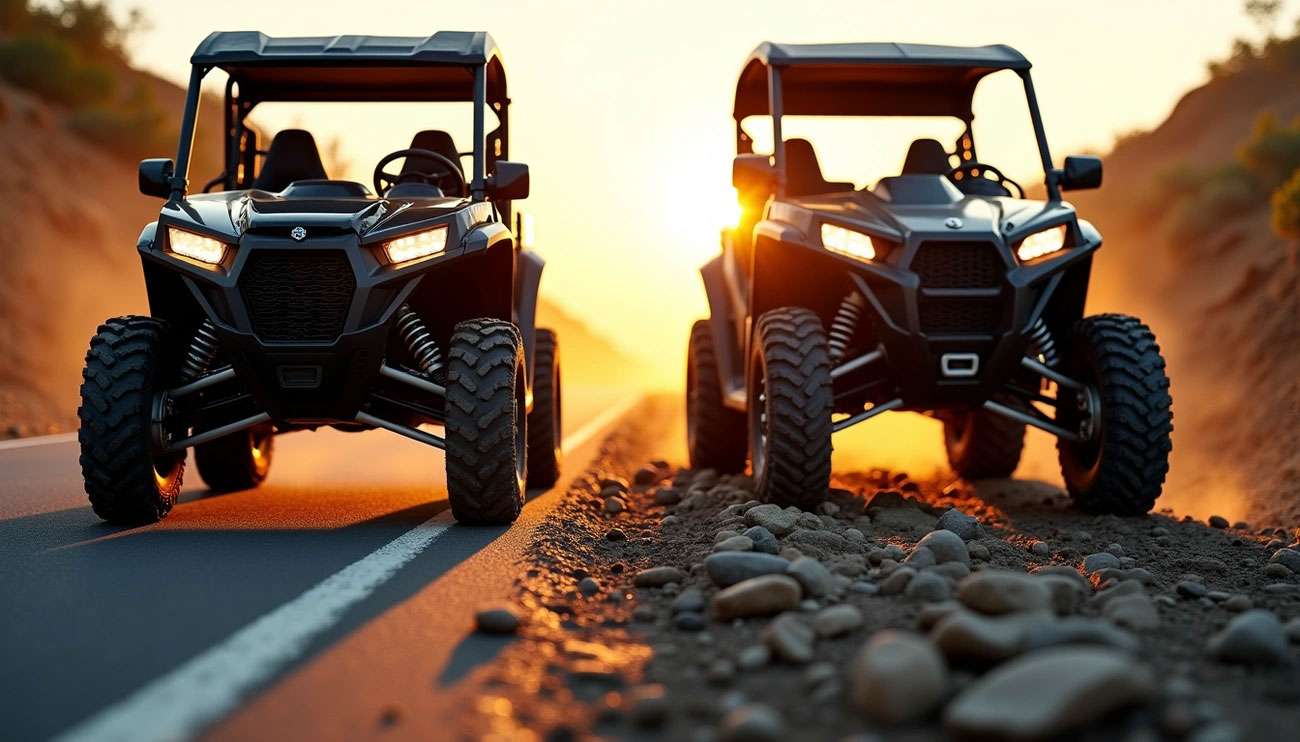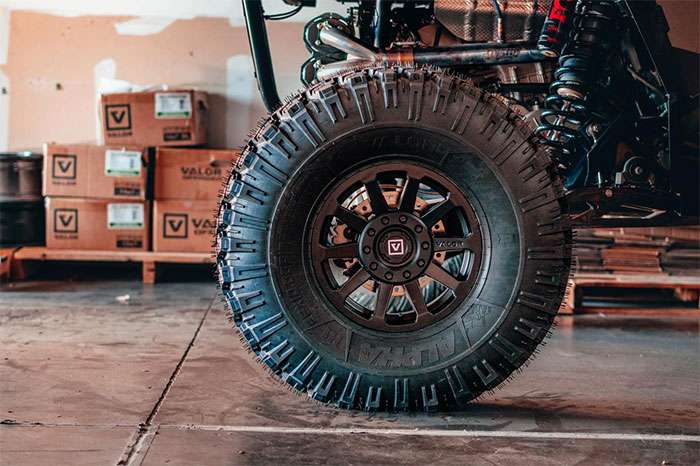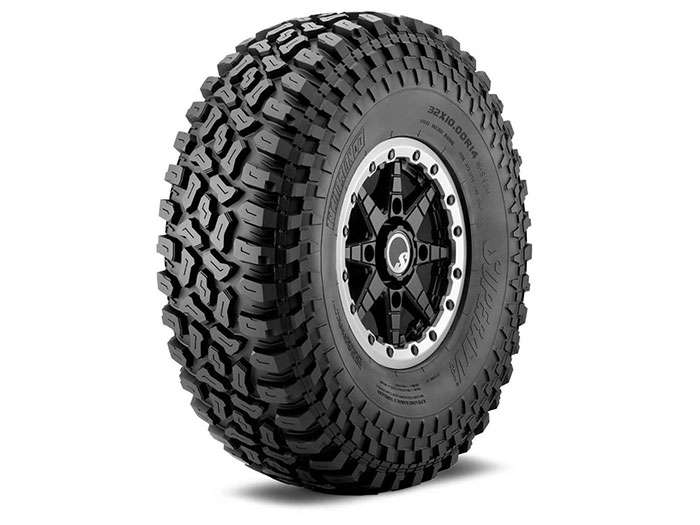
ATV UTV tires require careful attention to new regulatory standards as the USTMA applauds NHTSA for informing dealers that tires sold in the US must be labeled as compliant with FMVSS standards. These regulations represent just one factor in selecting the right tires for your off-road adventures.
ATV and UTV tires serve distinctly different purposes despite their similar appearance. ATV tires feature lighter construction designed for agility, with aggressive tread patterns optimized for varied terrains and lower ply ratings typically ranging from 2-6 ply. UTV tires, however, are engineered for heavy-duty performance with higher ply ratings from 6-12 ply to support rougher terrain and substantially heavier loads.
Durability concerns affect many riders, particularly those who regularly switch between trail and pavement riding. Aggressive tread patterns that excel in mud and loose terrain can wear down rapidly during extended asphalt use.
We've put dozens of tire models through rigorous testing across challenging terrains to deliver straight facts about performance, durability, and value. Our testing covers everything from budget-friendly options that maintain safety standards to premium tires built for specific conditions. This guide provides the real-world data you need to choose tires that match your riding style and terrain demands for 2025.
ATV and UTV tires serve different purposes, and these design differences affect everything from terrain performance to maintenance requirements. Understanding these distinctions helps you select tires that match your vehicle's capabilities and your riding demands.
ATV tires feature aggressive, widely spaced lugs designed for self-cleaning action in muddy conditions. The tread pattern delivers excellent bite on loose surfaces but wears more rapidly on hard-packed trails. UTV tires typically use more balanced tread designs with closer lug spacing, providing better stability at higher speeds and superior handling on mixed terrain.
Rock crawling applications require specialized considerations for both tire types. UTV-specific rock tires include additional sidewall protection to handle the vehicle's heavier weight and higher torque output. All-terrain patterns have gained popularity among riders who tackle diverse landscapes without switching tires between different terrain types.
The construction differences between these tire types are substantial. ATV tires typically feature 2-6 ply ratings, keeping them lighter and more responsive for agile riding. UTV tires start at 6-ply construction and extend to 12-ply for extreme applications, designed to handle:
Vehicle weights often 1,000+ pounds heavier than ATVs
Multiple passenger loads
Cargo capacity requirements
Higher horsepower and torque outputs
Higher ply counts provide increased puncture resistance while affecting sidewall stiffness, heat dissipation, and overall tire lifespan.
Size conventions vary significantly between vehicle classes. ATV tires range from 22 to 28 inches in diameter with widths between 8-12 inches. UTV tires start around 25 inches and extend to 35+ inches in diameter, with widths reaching 15 inches for high-performance applications.
Mounting systems also differ between vehicles. ATVs use traditional lug patterns on steel or aluminum wheels, while UTVs often employ beadlock wheels or advanced mounting systems. These systems prevent tire slippage during extreme off-camber riding or when running lower pressures for improved traction.
Testing ATV and UTV tires across demanding terrains reveals performance gaps that manufacturer specifications don't always capture. We pushed these tires through extreme conditions to deliver actionable insights about what actually works when the trail gets tough.
Radial construction consistently outperforms bias-ply designs in handling and cornering stability. Certain manufacturers report impressive improvements - 30% better steering responsiveness, 50% enhanced cornering capability, and 70% increased overall traction compared to previous designs.
Side-by-side testing shows that tires with flatter profiles and aggressive tread patterns like the Maxxis Carnivore deliver exceptional cornering stability with truck-like handling characteristics, especially on rocky terrain. However, enhanced stability comes with trade-offs - stiffer sidewalls transmit more trail vibrations to riders, affecting comfort on longer rides.
Our testing across different surfaces reveals distinct performance requirements:
Mud Performance: Deep, widely-spaced lugs provide superior mud clearance through self-cleaning action. These aggressive patterns prevent tread clogging and maintain forward traction in challenging conditions.
Sand Handling: Lightweight paddle-tire designs with scoop-shaped treads excel by pushing sand backward, keeping vehicles riding on top rather than digging in. Proper tire selection prevents the frustrating experience of getting bogged down in loose sand.
Rock Crawling: Reinforced sidewalls and puncture-resistant construction prove essential for rock terrain. Tire pressure becomes critical - maintaining 10-12 PSI prevents pinch flats while providing adequate protection.
Tire pressure adjustments dramatically affect performance across terrains. Reducing pressure to 6-8 PSI in sand or mud increases the contact patch and improves flotation.
Extended testing reveals important wear patterns that affect long-term value. Aggressive off-road tread patterns show rapid deterioration on hard surfaces, while front tires consistently wear faster than rear tires across mixed terrain. High-performance models like BFG KR2s demonstrated exceptional durability, maintaining tread integrity through 330 miles of intense racing conditions.
Temperature and elevation changes significantly impact tire pressure - a 10°F temperature shift alters pressure by approximately 2%, making regular pressure checks essential for optimal performance.

Image Source: Valor Offroad
No DOT-approved ATV or UTV tires exist on the market today. This fact catches many riders off guard when planning to take their vehicles on public roads. The Department of Transportation does not certify or regulate tires for off-highway vehicles since these machines aren't designed primarily for street use.
The National Highway Traffic Safety Administration has directed manufacturers to remove "DOT" markings from all ATV/UTV tires. No federal regulation or standard currently exists that would qualify any UTV tire as street legal. However, some states permit ATVs on public roads when specific conditions are met:
Minimum tire tread depth of 2/32 inches
Maximum tire height of 29 inches
Pavement riding requires different tire characteristics than trail conditions. Flatter tread patterns with tighter spacing deliver better grip and more even wear on hard surfaces. ATVs operating on streets must follow strict speed regulations—45 mph maximum on highways. Riders on higher-speed roads must maintain position on the extreme right side.
Road surfaces amplify vibration and noise compared to natural terrain. Riders who upgraded to Tusk Terrabite tires report dramatic vibration reduction, with one noting "all you hear is engine" instead of tire noise. Tires with rounded profiles provide optimal road contact and high-speed stability while minimizing tread squirm.

Image Source: UTV Source
We've tested dozens of ATV UTV tires across challenging conditions to bring you the standout performers that deliver exceptional value for every riding style.
The Tusk Terrabite stands out as our top pick for riders seeking versatility without compromise. Its truck-style tread pattern and premium rubber compound deliver superior performance on both trails and pavement. What sets the Terrabite apart is its ability to eliminate the harsh vibration and excessive noise that plague most aggressive tread designs. This 8-ply radial construction provides the durability you need while the aggressive shoulder and sidewall tread offer maximum protection when conditions get tough.
The Kenda Klever XT delivers the best pavement handling we've seen in an 8-ply UTV tire, while remaining the lightest steel-belted option available. Built on Kenda's proven light truck tire design, this model features studdable construction for winter conditions and delivers outstanding traction across multiple surfaces. The robust bead protector prevents costly wheel damage from rocks, making this tire an excellent investment for riders who value both performance and protection.
When maximum trail performance is your priority, the System 3 RT320 delivers race-proven capability. This tire pulls hard through loose terrain yet provides surprisingly smooth handling on hardpack surfaces. The lightweight 8-ply radial carcass features an extra-wide contact patch and high-mileage rubber compound that extends tire life significantly. Its non-directional design offers consistent performance regardless of mounting direction.
Smart shoppers will appreciate the GBC Dirt Devil, which offers outstanding value with its deep V-type tread pattern and reliable 6-ply construction. For riders seeking maximum tread depth without premium pricing, the ITP Mud Lite AT provides 3/4" deep tread with angled shoulder lugs that deliver remarkable traction at an affordable price point. These budget-friendly options prove you don't need to compromise safety to stay within your budget.
Selecting the right ATV or UTV tires requires matching your specific terrain needs with the proper tire construction and tread design. Our extensive testing reveals that no single tire excels across all conditions – each design serves particular riding styles and environments best.
Safety remains the top priority for any tire selection. While some models handle pavement well, remember that no DOT-approved options exist for these vehicles. This regulatory gap affects legal compliance for public road use.
Tread pattern selection directly impacts both performance and tire life. Deep, widely-spaced lugs provide excellent mud traction but wear rapidly on hard surfaces, while closer tread spacing delivers better stability at higher speeds. Proper tire pressure adjustments make a significant difference – 6-8 PSI works best in sand or mud, while 10-12 PSI prevents pinch flats on rocky terrain.
We recommend the Tusk Terrabite for riders who need versatility across trail and pavement conditions. The Kenda Klever XT delivers excellent road performance without sacrificing off-road capability. Budget-conscious riders can find solid value in options like the GBC Dirt Devil that maintain essential safety features.
Regular maintenance extends tire life significantly. Check tire pressure before each ride, inspect for damage after challenging terrain, and rotate tires periodically. These simple steps maximize both performance and durability.
Ready to upgrade your ride? Consider your primary riding terrain, choose the appropriate ply rating for your vehicle's weight, and select tread patterns that match your most common conditions. With the right tires properly maintained, you'll enjoy improved traction, better handling, and longer tire life across all your off-road adventures.
Understanding the critical differences between ATV and UTV tires will help you make safer, more informed purchasing decisions for your off-road adventures.
• No ATV/UTV tires are DOT-approved for street use - despite marketing claims, these tires aren't federally certified for public roads, creating legal and safety concerns for street riding.
• UTV tires feature higher ply ratings (6-12 ply) than ATV tires (2-6 ply) - this construction difference directly impacts load capacity, puncture resistance, and durability for heavier vehicles.
• Tread pattern selection dramatically affects performance and wear - aggressive, widely-spaced lugs excel in mud but wear quickly on pavement, while tighter patterns offer better road stability.
• The Tusk Terrabite delivers the best all-terrain versatility - combining truck-style tread with 8-ply radial construction, it eliminates typical vibration while excelling on both trails and pavement.
• Proper tire pressure adjustments are crucial for terrain-specific performance - reducing to 6-8 PSI improves flotation in sand/mud, while 10-12 PSI prevents pinch flats on rocky terrain.
When selecting tires, prioritize your primary riding terrain and remember that no single tire excels everywhere. Regular pressure checks and maintenance will maximize both performance and safety across all conditions.
ATV tires typically have lighter construction with aggressive tread patterns and lower ply ratings, while UTV tires are built heavier with higher ply ratings to handle rougher terrain and heavier loads.
No, there are currently no DOT-approved ATV or UTV tires on the market. The Department of Transportation does not certify or regulate tires for these off-highway vehicles since they aren't primarily manufactured for street use.
Tire pressure significantly impacts terrain-specific performance. Reducing pressure to 6-8 PSI in sand or mud increases the contact patch and improves flotation, while higher pressure (10-12 PSI) on rocky terrain helps prevent pinch flats.
The Tusk Terrabite is widely considered an excellent all-terrain option. It features a truck-style tread pattern and 8-ply radial construction, providing durability and versatility for both off-road trails and paved surfaces.
Regular maintenance is crucial for maximizing tire longevity. This includes checking tire pressure before rides, inspecting for damage after rough terrain use, and rotating tires periodically. Additionally, choosing the right tread pattern for your primary riding terrain can help reduce premature wear.